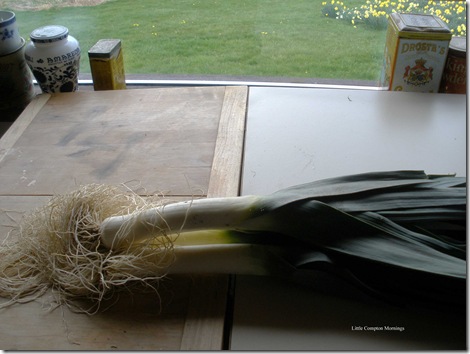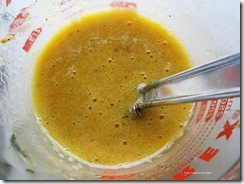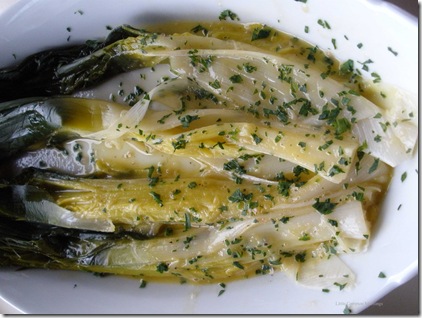 We really are stuck in the ‘tween months, aren’t we? It’s still unseasonably cold, it’s still rainy and windy, and many parts of New England still have snow on the ground. But I’m done with winter, and with winter vegetables, ready to move on. Each time I approach Steve‘s farmstand on my way over to Westport, I look with misplaced hope to see if by chance or miracle the little wooden “asparagus” sign is up. Nope. Not yet. Not for another month, I’m afraid. The daffodils are just barely up, the asparagus way behind.
We really are stuck in the ‘tween months, aren’t we? It’s still unseasonably cold, it’s still rainy and windy, and many parts of New England still have snow on the ground. But I’m done with winter, and with winter vegetables, ready to move on. Each time I approach Steve‘s farmstand on my way over to Westport, I look with misplaced hope to see if by chance or miracle the little wooden “asparagus” sign is up. Nope. Not yet. Not for another month, I’m afraid. The daffodils are just barely up, the asparagus way behind.So I content myself with leeks, a small salvation from vegetable limbo. Though leeks have been around for much of the winter, they are really nice now, with long, substantial white bulbs that make for generous cutting. They are a nice bridge vegetable between salad-free winter and the light crisp greens and tender veggies of early summer, both comforting and elegant. In the right preparation, they give me a sense that winter is dying down, and that the lightness of being that is summer is inevitably, thankfully, rising ahead. Perhaps that is why leeks are sometimes called “poor man’s asparagus”—although, like so much else, they are cheap no more.
Leeks are cousins of onions, shallots, scallions, and garlic—all members of the allium family—but they are gentler and more delicate in flavor. At the same time, physically they can be tough and fibrous, so need to be chosen and cooked with care. I prefer leeks of medium girth—not too skinny, not too fat. Select leeks that look fresh and young, with sprightly, clean root hairs and pliable but straight green stalks; they should look like giant scallions, with as much white as possible. Try to buy them loose so you can choose leeks of the same size, rather than in the mismatched bunches that so defy logic that they must be a product of grocer passive-aggressiveness. You will sometimes hear leeks referred to as “ramps,” a name for a wild leek, generally stronger in flavor than the cultivated variety and so really a different variety than we are talking about here. Like other alliums, there is evidence that leeks may balance cholesterol and blood sugar, and reduce the risk of certain cancers.
The most famous use for leeks is the classic vichyssoise, a pureed soup of leek, potato, stock, and cream served cold and sometimes, by another name, hot. One of those oft bastardized dishes, vichyssoise made in the classic manner is very good and quite elegant, and makes a lovely early spring or summer starter or light lunch. Leeks can also be used the way you would use scallions or onions: as a basic aromatic in salads, sautés, and stir-frys; chopped as a garnish; in a quiche; even grilled or deep-fried. When braised in a little veal stock, they take on a melting quality and depth of flavor that makes for an excellent accompaniment to roasted or grilled meats, especially beef and lamb. All these are very nice. But one of my favorite ways to eat leeks in the spring is as a kind of salad, served at room temperature with a flavorful vinaigrette.
To prepare leeks whole, cut off the root and cut vertically up the white part of the leek; if large, cut a cross in the white part and make a single cut down the center of the leaves. Fill a clean sink or bowl with water and swish them around. Do this twice, rinsing well under the tap: leeks trap sand, soil, and critters. If you are cutting your leeks across the bulbs into slices, cut them first and then soak them a bit in a bowl of water and drain in a colander under running water.
Spring Leeks Vinaigrette
This is provincial cooking at its best, the whole leeks served simply with a dressing alongside a nice grilled steak or paillard, or perhaps with a plain parsley omelet, a favorite of mine. Or alone for lunch. Serves 2.
3 medium leeks, about 1 ½” diameter
Salt
A few peppercorns and whole allspice or cloves

A generous splash of white or rosé wine
A few parsley stems
1 egg yolk
½ tea Dijon mustard
½ tea, generous, finely minced shallot
2 T white balsamic vinegar (or regular white wine vinegar)
¼ cup extra-virgin olive oil
¼ tea salt and 3 or 4 twists of freshly ground pepper
Snipped chives or chopped parsley (optional)
Finely chopped hard-boiled egg (optional)
Cut the leaves to about 4” long and trim and clean the leeks in two changes of water, as described above. In a pot or sauté pan large enough to lay the leeks flat, bring them to a boil in salted water seasoned with the salt, peppercorns, wine, allspice, and parsley stems; reduce the heat to a still-bubbling simmer and cook until tender, 8-10 minutes. Drain. Slice the leeks through lengthwise into halves or, if large, quarters. Wrap them in paper towels, squeeze gently, and set aside to continue to drain.
In a small bowl or measuring cup, whisk the egg yolk, mustard, white balsamic, salt, and pepper. Gradually whisk in the oil, and correct for seasoning. Put the sliced leeks into a shallow dish, such as an au gratin, pour half or more of the dressing over the still-warm leeks, and toss gently; reserve any extra dressing for another use. Let stand for about 5 minutes. Serve on plates, garnished with chive/chopped parsley and/or sieved hard-boiled egg if desired.

___
Notice: Voting for Rhode Island Monthly’s Best of Rhode Island is open, and there is a category for best local website. If you appreciate Little Compton Mornings and would like to show your support, you may vote here now: http://www.rimonthly.com/Rhode-Island-Monthly/Best-of-Rhode-Island/Best-of-Rhode-Island-Ballot/ . I thank you!

No comments:
Post a Comment